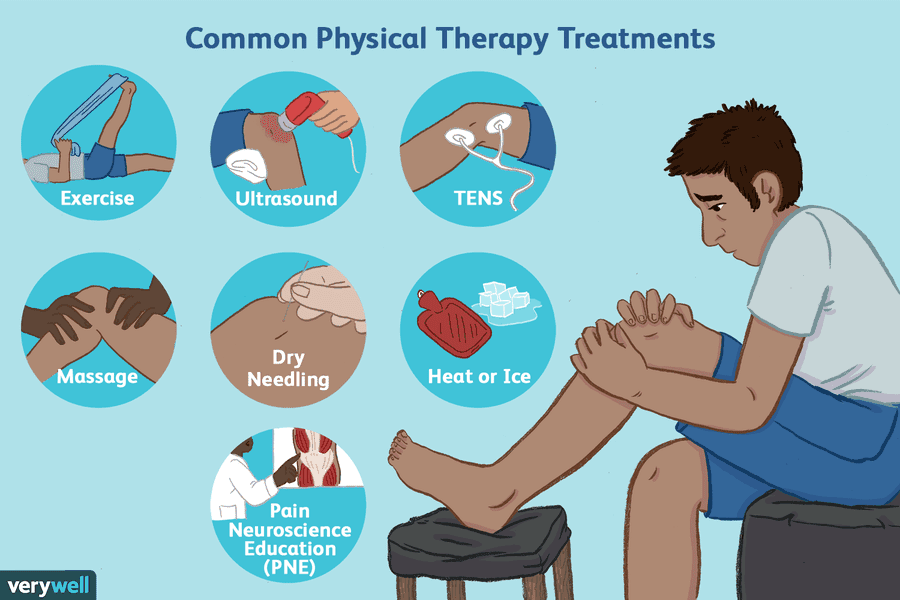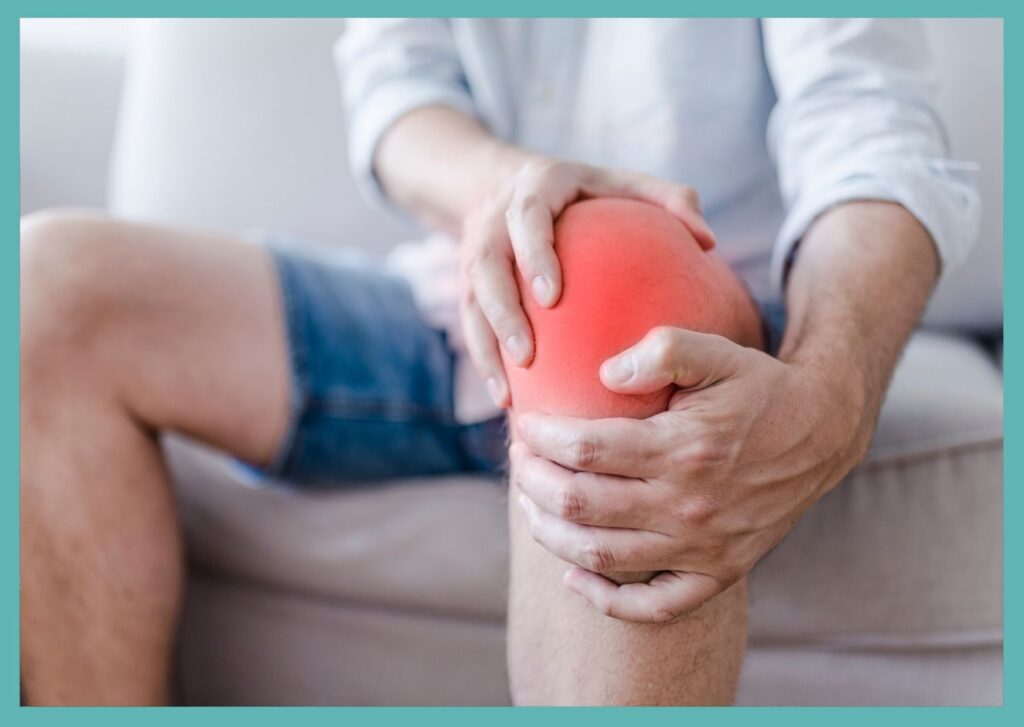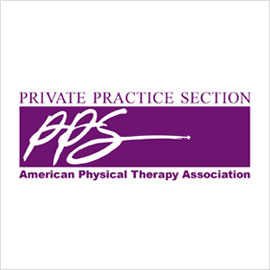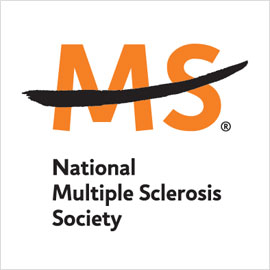
It is estimated that about 100 million people in America are living with chronic pain. Chronic pain can interfere with your day-to-day work and recreational activities, and it may have a profound effect on your ability to concentrate, relax, and enjoy life.
There are a multitude of treatments available for chronic pain: medication, massage, exercise, acupuncture, and a host of other treatments. Physical Therapy (PT) for chronic pain is also an option, and it may help you manage your pain and regain your normal mobility.
If you have chronic pain, working with a physical therapist can help your pain go away, and your therapist can give you strategies to keep the pain away. So, what does physical therapy for chronic pain look and feel like, and what can you expect from PT for chronic pain?
What Is Chronic Pain?
The simple definition of chronic pain is pain that has been present for greater than 12 weeks.
However, it can be more complex than that, and the best way to understand chronic pain is to learn about its cousin: acute pain. Acute pain is pain that comes on suddenly and lasts for a few weeks. Typically, acute pain is caused by some traumatic event that injures your body’s tissues.
If you smash your thumb with a hammer, for instance, this causes acute pain. The pain is sudden and severe, and you can easily discern the cause of it. Your thumb becomes red, swollen, and painful. Over the course of a few weeks, however, the pain goes away as your thumb heals.
Now imagine that you smash your thumb with a hammer again. Your thumb becomes red, swollen, and painful. This time imagine your thumb pain continues long after the signs of injury have gone away. The tissues are clearly healed, but your thumb still hurts. When you try to move your hand, the pain increases. This is chronic pain.
Chronic pain can be confusing, and it can prevent you from moving normally and concentrating on your daily activities. Plus, dealing with chronic pain can leave you and your doctor perplexed.
Often, pain occurs when there is little or no tissue damage. Why is the pain lasting long after the tissues are healed? Why are medicines not effective in treating your pain? Is there something really wrong? These questions may be difficult to answer and finding the best treatment for your chronic pain may be equally difficult.
Treatments Types
There are many different treatments available for chronic pain. Finding the best one for you can take a little trial and error.
- Physical therapy (PT)
- Medication (oral or injected)
- Supplements and natural remedies
- Chiropractic care
- Massage
- Acupuncture
- Exercise
- Meditation
- Cognitive behavioral therapy (CBT)
There are likely more items to add to this list, and you may find one remedy helpful while another may not be effective for your pain at all. Physical therapy may be an option to treat your chronic pain and working with a physical therapist has been shown to help chronic pain sufferers improve their function while decreasing or eliminating their pain.
What to Expect
When attending physical therapy for chronic pain, your first session will be an initial evaluation. During this session, you will meet your physical therapist and discuss your condition.
Your therapist should ask questions about your pain and how it behaves. Is your pain present constantly or intermittently, and how does it affect your life? What makes it better or worse? Your physical therapist should also ask about any previous treatments you have received and the effect those treatments have had.
He/she might do a review of your overall medical history and will perform various tests and measures to get a sense of any impairments that may be contributing to your pain, including:
- Range of motion
- Posture
- Strength
- Balance
- Endurance
Some of these tests may increase your pain, while others may cause your pain to decrease. Be sure to communicate with your physical therapist how you are feeling and how sensations are changing during your evaluation.
Once your PT evaluation is complete, your physical therapist should work with you to develop realistic and attainable goals for therapy. Goals may include pain relief, extended range of motion, increased strength and improved functional mobility. Your goals should be personal and should give you a road map to follow during your rehabilitation program. Finally, your treatment can begin.
PT Treatments
When you attend physical therapy for chronic pain, you may experience various treatments that may be used to decrease pain, improve your mobility, and help you fully function. Common treatments used by physical therapists for chronic pain patients include:
- Exercise: Exercise should be your main PT tool in the treatment of chronic pain because it can help your body improve strength and mobility. Think of exercise as a feedback loop. Your brain moves your body, so exercise is output coming from your brain. When you can move with little or no pain, you are reinforcing to your brain that the movement is not going to hurt. This positive feedback allows you to move more with less pain. So while you are getting stronger and improving mobility, you are also training your sensitive nervous system to trust that the movement is safe.
- Ultrasound: Ultrasound is a deep heating modality that you may encounter while in PT. It is applied to your skin and as your body’s tissues are heated, it is thought that this improves circulation and blood flow. It is important to note that ultrasound has not been proven to be an effective treatment for chronic pain. Still, you may encounter this treatment during your PT sessions.
- TENS and Electrical Stimulation: Transcutaneous electrical nerve stimulation (TENS) is a therapeutic modality that uses electricity to decrease pain signals coming from your body to your brain.
- Massage: Some physical therapists employ massage techniques to decrease pain by improving muscular blood flow and relieving tightness.
- Dry Needling: Dry needling is a newer treatment employed by some physical therapists to decrease painful muscle knots and trigger points. This treatment involves using small needles (such as acupuncture needles) to pierce muscle tissue and knots, relieving the pain in these spots.
- Heat or Ice: Modalities like heat and ice are often used by PTs to help decrease pain and inflammation. These treatments have not been proven to be effective with patients dealing with chronic pain, but they are often used as adjunct treatments during your PT sessions.
- Pain Neuroscience Education (PNE): New research indicates that teaching patients about their pain and why it is happening can have a positive effect on their rehab. Your physical therapist may spend time teaching you about why you have pain, how your pain might behave, and things you can do to take control of your pain.
Each of these treatments is designed to achieve a specific goal. It is important that you discuss with your physical therapist the intent of the treatment, so you know what to expect.
Finding What Works
Some Treatments Not Proven Effective
Some PT treatments for chronic pain are based on theoretical models and have not been proven to be effective for pain. Does this mean that they will not be effective for you? No. It simply means that in studies of large groups of people with similar characteristics, some treatments have not been proven to work. Understanding the research can help you make informed decisions about your care.
Some treatments that may not be as effective for chronic pain include ultrasound, TENS, or heat and ice.
A meta-analysis (study examining conclusions of many different studies) concluded that ultrasound was not effective for chronic low back pain (LBP) when compared to exercise alone or a placebo (fake treatment). The authors concluded: “No high-quality evidence was found to support the use of ultrasound for improving pain or quality of life in patients with non‐specific chronic LBP.” Another meta-analysis of the use of massage for chronic pain concluded that patients may report a 20 to 80 percent reduction in pain after a massage, but that these reductions are temporary. Massage, however, may help improve the mobility of tissues and feelings of well-being. Dry needling studies show similar results, and both heat and ice are shown to give slight short-term relief of pain.
Treatments Proven to Be Effective
Exercise has been proven to be effective for chronic pain. Pain neuroscience education (PNE) or learning about pain and how it affects your body, has also been shown to offer long-term benefits with pain reduction and improved mobility.
Research published in the Archives of Physical Medicine and Rehabilitation showed that a graded walking program can have a positive effect on patients with chronic pain. However, one important caveat of the study was that adherence to an exercise and a walking program can be difficult. Still, finding ways to maintain walking and exercising is important. (Your PT can help with this.)
In addition, neuroscience pain expert Adriaan Louw has found that learning about pain through pain neuroscience education (PNE) can improve symptoms, mobility, and feelings of psychological well-being in people with chronic pain.
Overall, passive treatments like heat, ice, or massage may feel good. However, if you want to take control of your pain, more active treatments like exercise and learning about your pain are recommended.
The most important thing to remember is that your pain is personal. Your physical therapist can work with you to find specific things that can help you move better and feel better.
If you have chronic pain, you may find that it is difficult to function well. Managing your pain can be challenging, as there are many different options for you, all with varying degrees of effectiveness. Physical therapy, with a focus on exercise and pain neuroscience education, can be an effective way to decrease your pain and improve your mobility.










